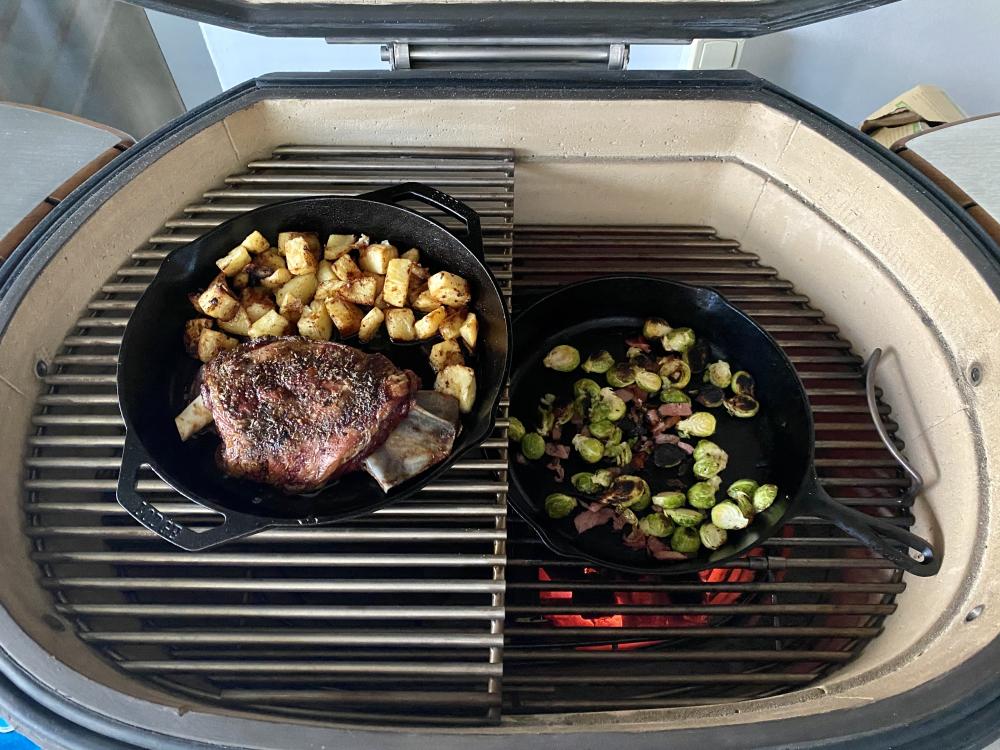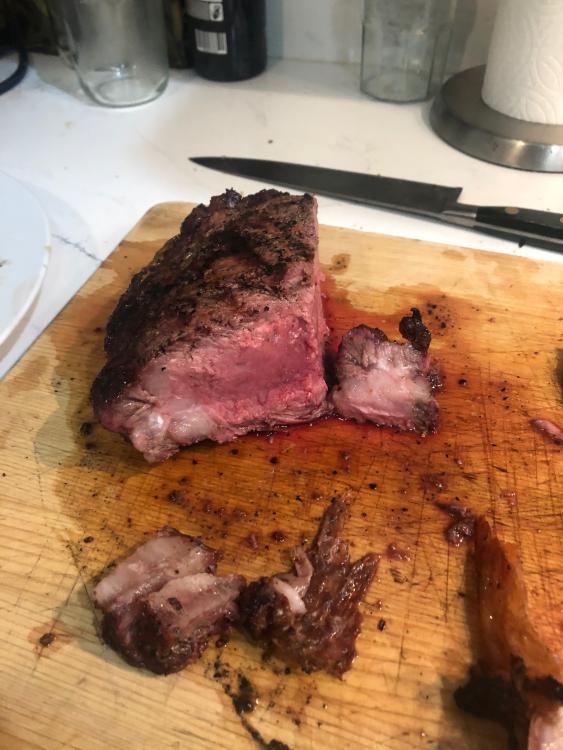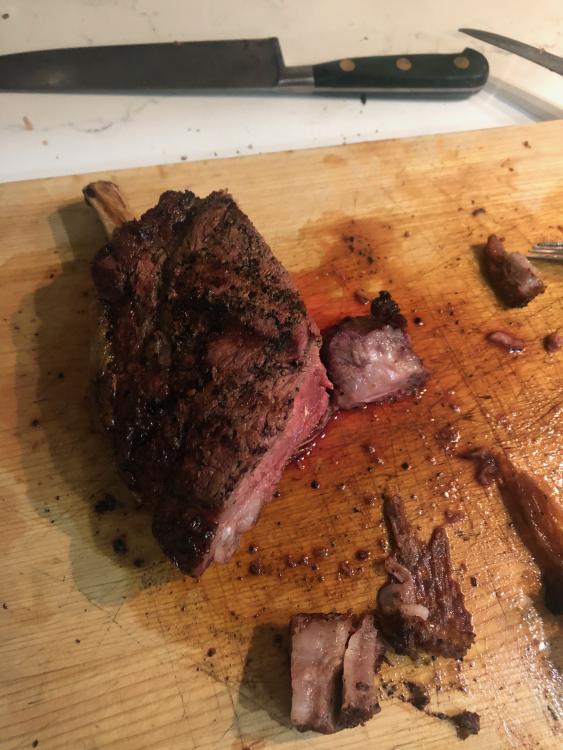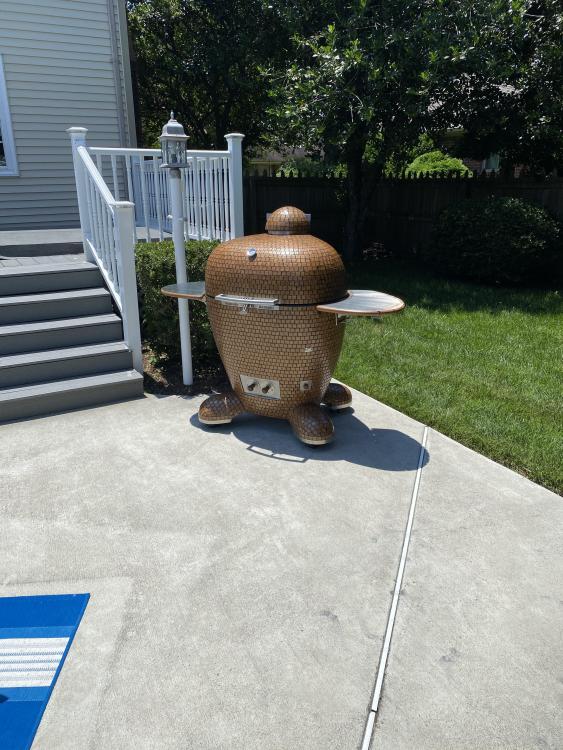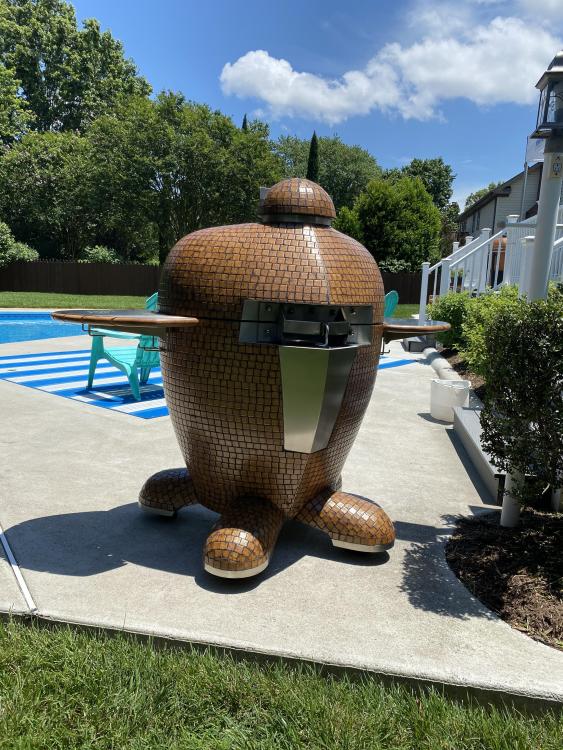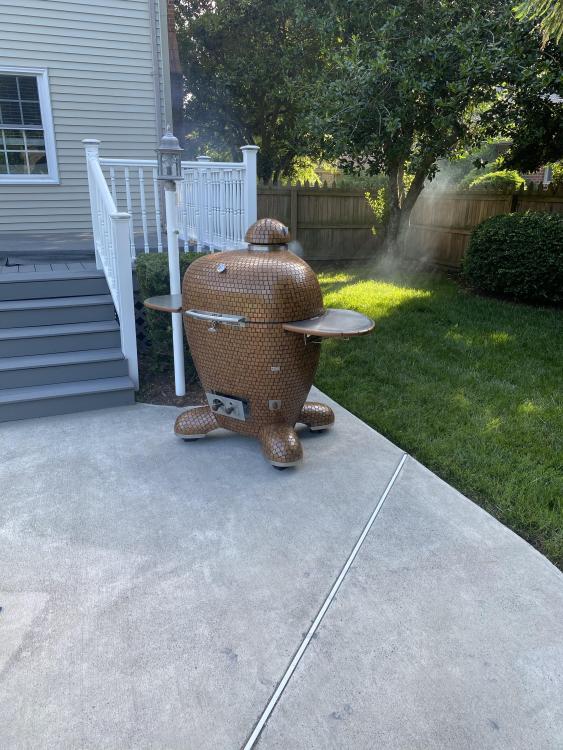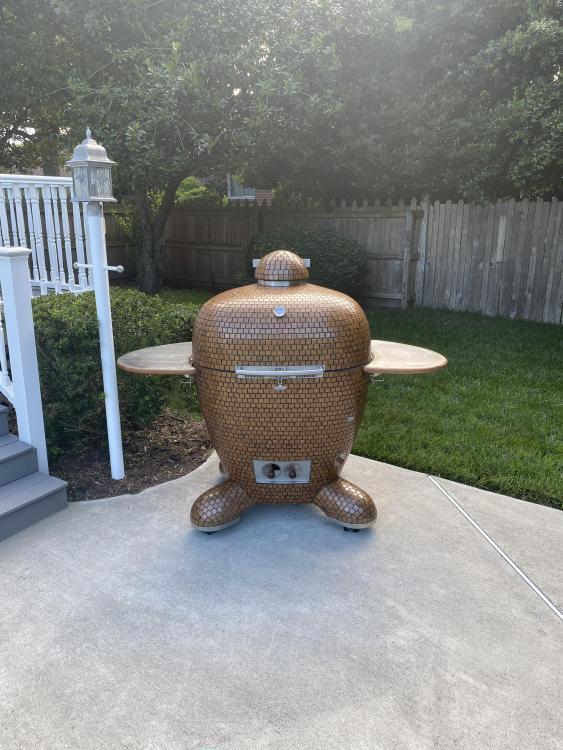Leaderboard
Popular Content
Showing content with the highest reputation on 01/13/2021 in all areas
-
6 points
-
Hi all, As the title says, my BB32 will be delivered some time this week. I'ts like the birth of a new child. This is my first charcoal BBQ, and so I feel like I'm jumping in the deep end. The phrase "all the gear and no idea" keeps bouncing around my head!! argh. I'm hoping there is quite a bit of literature that comes with the unit, as I feel my learning curve is going to be steep. Firstly, is there anything I really must have ? Elbow length welding gloves ? Something to "poke" the coals ? I have long tongs and just bought a Fireboard 2 with fan. (Not sure how the fan is going to mount yet, but that will be for later...) Also picking up a MAPP torch for starting the coals. Is there a cooking guide ? eg what temps should I be heating the KK up to for steak, fish, sausages etc? When should I use half the coals, where should I cook, what level etc Anything I really shouldn't do ? I've got so many questions, Oh, I'm hoping I can sell my rather newish 4 burner Weber gas BBQ some time. But as we have kids, sometimes they just want a couple bbq sausages cooked. Seems crazy to stoke a KK for that. Do people have small gas bbqs for something like that ? Was thinking a cheap $300 "club" style flat bbq might be handy for that sort of thing. Thanks in advance. Cheers Jamie4 points
-
Jamie congrats on your decision to invest in a KK. Yes to gloves, yes there is a reasonable manual to show you the basics. You will get the hang of everything else with a bit of practice. Troble and I use a flat gas griddle for eggs, bacon and quick cook ups. Others use Parrella style grills, pans and other methods. You will find once you get the hang of lighting the fire and then temp control within the KK you will use it even for short cooks. BTW sausages in the KK are delish, seriously good... even cheap snags become sooo much better. The KK bakes the skin to a crispy crunch- not oily like a pan fried snag, a dry crunch. There are plenty of tips on line for Kamado cooks. My best advice to you is to dive in and cook as much as you can on your KK. Before long it’ll become second nature to you. What do you usually like to cook? Sent from my iPhone using Tapatalk4 points
-
Perfect. And no bench is high enough in that house. I’d be keeping a very close eye on that steak. Sent from my iPhone using Tapatalk3 points
-
I love this forum - thanks for all the responses. I have been primarily using the lower cooking grate along with half the main grate on the left side. Have the basket splitter installed and only have coals under the right lower side (see pic). I really like this setup in terms of versatility, but just struggling with the heat. I can get it hot, but generally not hot enough to get a really nice sear like I would on my Weber Kettle. I have just ordered some more charcoal as I suspected that I was not loading the basket up sufficiently. I mainly want to be able to get a really nice char on a thick tomahawk that has already been either indirectly cooked or Sous Vide.3 points
-
Here, let me show you to the entrance! LOL! Moroccan Cookware | Treasures of Morocco Bulgarian clay pots | Etsy2 points
-
Give the sear grate a go next time and see if you like the results better. Just be careful to turn the steak over frequently (every 30 seconds), so you don't over cook it, until you get the char that you're looking for.1 point
-
Welcome to the Obsession! You're in for a great experience cooking on your new KK. Best advice on learning how to cook on your KK - fill up the basket with charcoal, light it in one small spot near the middle, set up a chair and a cooler of adult beverages of choice. Set the top vent just barely off the seat (just enough to see smoke exit) and open the bottom vent about a 1/4 on the left dial. Let the KK come up to temperature and get steady while enjoying that adult beverage, make a note of the top vent position and the dome temperature. Next bump open the top vent a little more, like 1/8 of a turn. Let the KK temperature rise to its new steady spot - take note again. Keep doing this process until you get the dome up to about 350F. At about 275F, you might need to bump the bottom vent open a tad more. Making notes along the way. The vent setting are very repeatable. The vast majority of your cooks are going to be less than 350F, which is why I stopped there. You will need to do the burn-in before going up much higher in temperature as well. Save that for another day. Once you hit that 350F mark, toss on something to cook - burgers, sausages, chicken pieces, whatever you're used to grilling on the Weber. Then sit back and enjoy the difference in the quality of the food coming off your new KK. Use the Forum to look for cooking techniques for different proteins and such. Ask questions, it's a friendly bunch here, with lots of experience.1 point
-
Congrats Jamie. The most used and common tool your going to need is a good grate cleaner and there are many. Wire brushes, 3/8" open end wrench, & grill floss are the most common hand held along with chemical agents in sizeable tubs to soak and then again some just crank up the heat to clean. Don't toss the Weber, I find every grill has it's advantages and disadvantages and the Weber is quick to please the kids with a fast hotdog. If you haven't noticed there are some here and myself included that enjoy BBQ so much we purchase various types of cookers. Sometime toys are expensive but the enjoyment of using them all come with the territory and a passion for using them. So, that being said I know you'll enjoy your KK, it is a great unit and you will soon become quite adept in it's use, good luck. Find a good cover1 point
-
2nd much of what @cruzmisl had to say. If I'm cooking a thinner steak (less that 1.5" thick), I use the lower grate. I will only use the sear grate if it's a thicker cut; otherwise you risk overcooking it or, at a minimum, ending up with that gray band of meat just below the crust. The other key - turn the steak often when searing on the sear grate, which will help minimize the overcooking. I typically turn every 30 secs, and rotate 90 degrees after the second flip to get a nice cross-hatch pattern. Choice of rubs was spot-on advice, too. Too much sugar in the blend will burn and get bitter. So will black pepper. If you want to amp up the flavor, put some compound butter (butter mixed with herbs and spices) on the steak while it's resting after searing or make a nice chimichurri sauce to serve on the side.1 point
-
1 point
-
Exactly, the upper grate turned upside down works perfect for searing. I love the reverse sear method where you bring the steak up to temp indirectly and then sear at the end. Steaks turn out perfectly every time! I made a video of this method and you can see the top grate upside down and right over the coals. You should have no problem at all getting a nice sear this way. 7A2FD34D-0770-4FEC-BD0F-AEB3E665054F.MOV1 point
-
1 point
-
1 point

Bull.thumb.jpg.50d347aabd71178c9d9a16b7663cfa1a.jpg)

